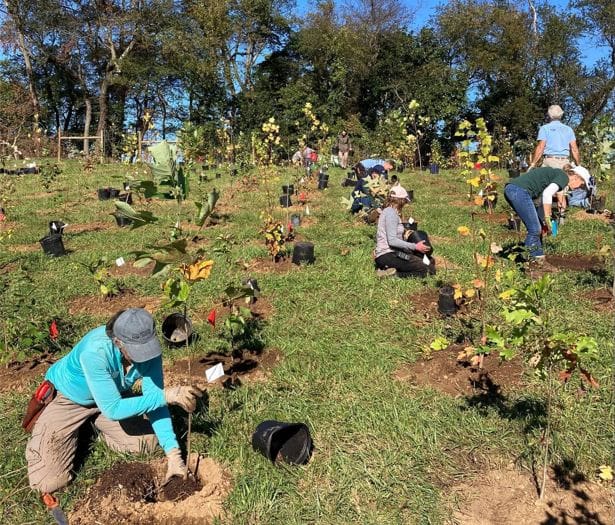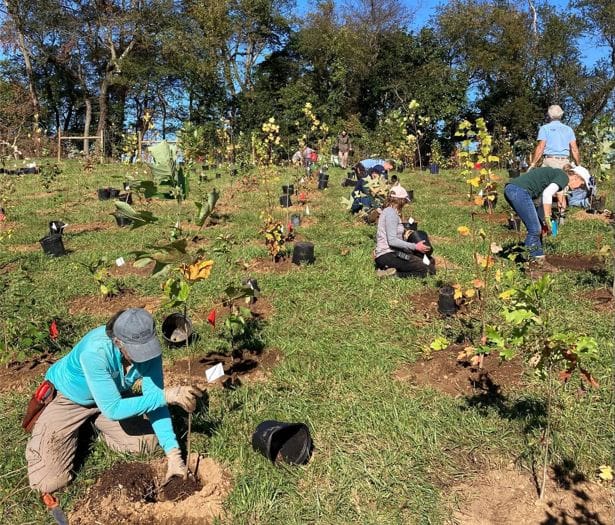
This fall, 60 volunteers worked for two weeks to plant 3,000 native trees and shrubs, part of a
test at Mt. Cuba Center on the best way to create a forest.
Three thousand native trees and shrubs have been planted this fall as part of Mt. Cuba Center’s massive study on the best ways to bring back the region’s forests.
The project began in 2015 and is planned to run for 100 years, “but we are already noticing things,” said Nathan Shampine, Mt. Cuba’s natural lands manager.
“The densest plantings are filling in the quickest, are much more diverse and a requiring a lot less maintenance,” he said. “But the tradeoff is that they were more expensive and labor-intensive” to do.
Mt. Cuba is testing six reforestation methods:
1. Sparsely planted trees, at 10-foot intervals.
2. Sparsely planted trees and shrubs, at 10-foot intervals.
3. Densely planted trees, at 5-foot intervals.
4. Densely planted trees and shrubs, at 5-foot intervals
5. Natural succession, with Mother Nature allowed to run its course.
6. Control, with sparsely planted trees and a different maintenance schedule.
To keep meadow voles out, plots 1-4 are being mowed for three to five years after planting, while the control plot will be mowed for 10 to 15 years. To keep out deer, all plots have 10-foot fences.
The plantings include 28 species of native trees and shrubs, such oak, maple, hickory, dogwood, viburnum and sumac.
This fall, 60 volunteers worked for two weeks on 3 acres of plantings.
The denser plots (Nos. 3 and 4) are doing the best so far, Shampine said, and Mt. Cuba’s experts “think the benefits of lower maintenance over the long term” will make up for higher upfront costs.
In the denser plots, the plants are twice as close as the sparser plots, but the geometry of the spacing means that there are three times as many plants, he said.
Forests are touted as an important way to sequester carbon and combat climate change, and forests of native plants – Mt. Cuba’s focus – support native wildlife as well.
The project, a partnership with West Chester University and University of Delaware, will by 2024 include 12,000 trees and shrubs on 12 acres.
Mt. Cuba officials are looking into counting these trees in the Tree for Every Delawarean Initiative, part of Delaware’s Climate Action Plan that calls for, predictably, 970,000 trees.
Researchers from both universities will collect data on tree growth rates, light infiltration, photosynthetic rates and soil composition.
Mt. Cuba will track the time spent on maintenance.
The plots are former grassy areas in the outer reaches of Mt. Cuba’s 1,000-acre property, not visible by visitors to the house and its nearby well-manicured gardens.
Mt. Cuba this fall also planted 5,000 plants in its new Woodland Shade Garden.
some info
Share this Post




